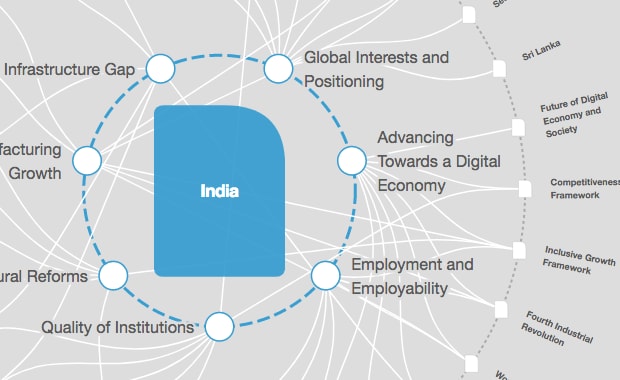9 things you probably didn’t know about India

India is large but it’s linguistic, culinary and cultural diversity is larger still. Image: REUTERS/Rupak De Chowdhur
Ancient, influential and in the ascendency, India is a truly unique country; one which often attracts generalisations but constantly defies them.
India is large but its linguistic, culinary and cultural diversity is larger still.
Indian housewives hold 11% of the world's gold
India’s private gold holdings total 15,000 tons, according to an estimate by Citigroup. That’s more than the reserves of the US, Switzerland and Germany put together.
Other analysts think this number is too conservative and that the real amount is more like 30,000 tons, counting other hidden temple treasures.
These private stores are in addition to the 560 tons of gold kept as reserves with the Reserve Bank of India.
India is the world's most populous democracy with 1.2 billion people
According to the Election Commission of India, 814.5 million people were eligible to vote in the 2014 general election, making it the largest-ever election in the world.
A UN study of global population trends predicts that India will overtake China to become the world's most populous nation by 2022.

75 - 100 million people attend India's Kumbh Mela Festival, the world's biggest gathering of humans
Hindus believe a dip in the Ganges River during the festival cleanses sins and helps to bring salvation.
The event, held every 12 years, has its origins in Hindu mythology - many believe that when gods and demons fought over a pitcher of nectar, a few drops fell in the cities of Allahabad, Nasik, Ujjain and Haridwar - the four places where the Kumbh festival has been held for centuries.
The World Bank and the International Monetary Fund both project a robust 7.5% growth for the country in 2016 and 2017
India's economic momentum is expected to be underpinned by private consumption, which has benefited from falling energy prices and rising wages.
"India has benefited from lower oil prices and remains the fastest-growing large economy in the world," the IMF said.

India has seen had the biggest leap of any country in the World Economic Forum’s Global Competitiveness Index

India’s overall competitiveness score was rather stagnant between 2007 and 2014, and the country slipped down the rankings in the Global Competitiveness Report as others made improvements.
However, improvements since 2014 have seen it climb to 39th in this year's edition of the report – up from 48th in 2007-2008. Its overall score improved by 0.19 points in that time.
The Hindu calendar has 6 seasons
According to the Hindu calendar, there are 6 seasons or 'Ritu' in a year. Since Vedic times, the seasons in the Indian subcontinent have been classified into these six categories. While North India mostly conforms to this marked change of seasons, it is less apparent in South India, which enjoys long summers and light winters.

The six Indian seasons classified in the Hindu scriptures are: Vasant Ritu or Spring, Grishma Ritu or Summer, Varsha Ritu or Monsoon, Sharad Ritu or Autumn, Hemant Ritu or Pre-winter and Shishir/Shita Ritu or Winter.
The number of people using the internet in India is greater than the population of the US
India passed 350 million internet users in 2015, according to the country’s industry body the IAMAI.
Over 60% of users access the web through mobile devices. The rate of take-up is rapidly gathering pace. It took India more than a decade to move from 10 million to 100 million internet users and three years to go from 100 to 200 million. But it took a single year to move from 200 to 300 million users.
Snakes and Ladders originated in India
The game was known as Mokshapat or Moksha Patamu and was played as early as the 2nd century BC.

Originally, the game was used in the moral instruction of children. The squares in which ladders started represented virtue while those with the head of a snake represented evil.
India will have 7 megacities by 2030, says UN
Every year, millions more leave their traditional homes in rural towns and villages and head into urban areas. The United Nations World Cities Report 2016 says 9.6 million people will move to New Delhi by 2030. Read more here.
Don't miss any update on this topic
Create a free account and access your personalized content collection with our latest publications and analyses.
License and Republishing
World Economic Forum articles may be republished in accordance with the Creative Commons Attribution-NonCommercial-NoDerivatives 4.0 International Public License, and in accordance with our Terms of Use.
The views expressed in this article are those of the author alone and not the World Economic Forum.
Stay up to date:
India
Related topics:
Forum Stories newsletter
Bringing you weekly curated insights and analysis on the global issues that matter.
More on Economic GrowthSee all
Robert Muggah
March 10, 2025






